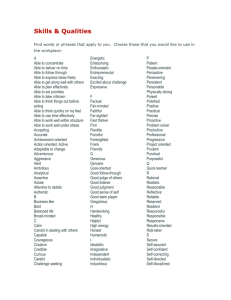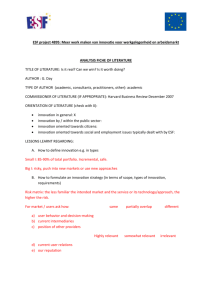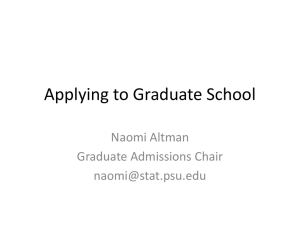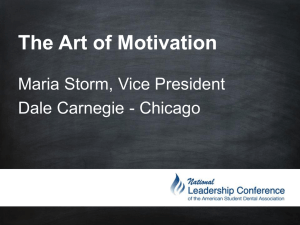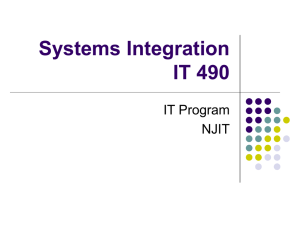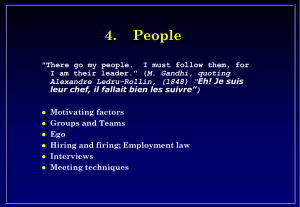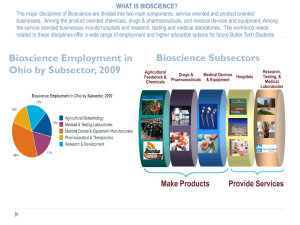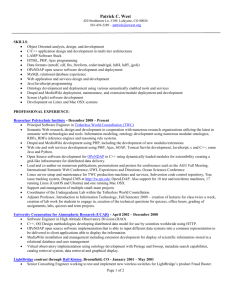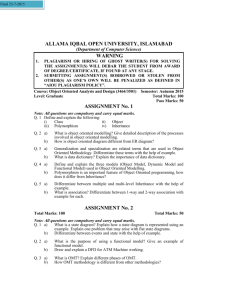Task-Oriented Manuals & Help Systems: Guidelines for Success
advertisement
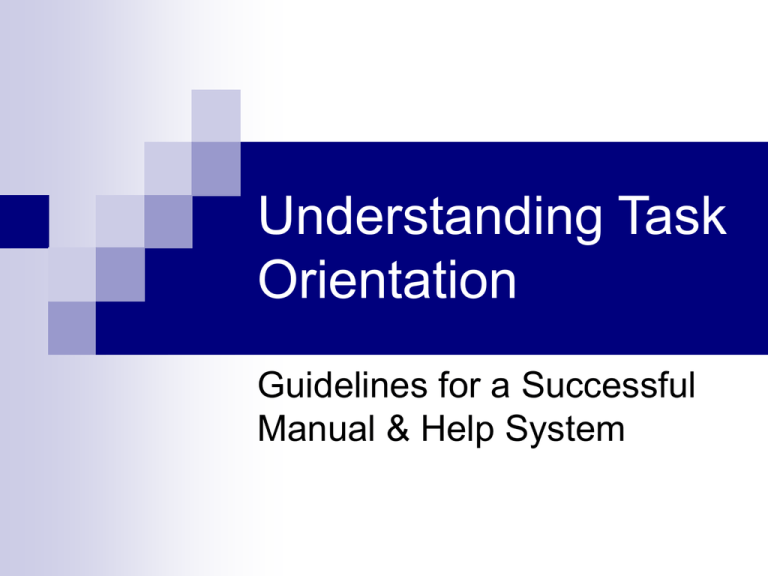
Understanding Task Orientation Guidelines for a Successful Manual & Help System Emphasize Problem Solving A manual or help system should help users solve problems in the workplace. Examples: How can I organize this project? Where should our company invest development time? Where and how can I find this specific data? How can I complete this specific task? Provide Task-Oriented Organization Organize a manual or help system in a way that matches the kinds of tasks a user will perform. Follow the sequence and not in terms of a alphabetically arranged menu. Example: A word processing manual that follows – Open a file – type in words – save the file – exit the program. Encourage User Control of Information Users must decide what the program can do for them. It should not be the other way round. Users should feel in control of the program. The manual should show users how to make key decisions, supply key information or determine key program outputs. Cross-referencing should add to more information access in a website or manual. Example: Specifying what a database program will search for and identifying which data the program will process. Orient Pages Semantically Semantic information in page design means you arrange the elements of the page meaningfully, according to elements of the job the user needs to perform. One best way to orient pages semantically employs visuals and graphics to balance text in a complementary way. Facilitate both routine and complex tasks Routine tasks include repeatable tasks that are easily represented by conventional procedures. Complex tasks require the user to apply knowledge that isn’t easily codified in step-by-step procedures. The more a manual or help system can be specific in terms of helping users with a complex task, the more it will be valued. Design for Users The design of a manual or help system should be based on users’ needs rather than from models or templates of how a manual should be arranged or should look like. User driven design should allow: Find what users need Understand what they find Use what they understand appropriately. Facilitate Communication Tasks A manual should be designed in terms of how users communicate with the manual or the program rather than a narrow view of program features. How do they help users with communication tasks? Designers need to learn about users’ interaction with the system. Encourage User Communities Users often need encouragement to rely on other users of the program. A task oriented documentation encourages users to identify and get help from others. These days we have blogs, other virtual communities sharing ideas about programs and processes. Often these groups are funded by organizations marketing the program or the component. Support Cognitive Processing While completing a task, users work with their own mental models. Their approach to task completion might be very specific. This is what is called cognitive schema. The task oriented manual uses principles of knowledge representation, parallelism, and analogy to convey software features and applications to workplace tasks. Principles of Software / Manual Documentation The job of a manual writer consists of constructing documents that help users: Learn to work with programs in standard and news ways. Keep track of the levels of user expertise. Adapting program/component capabilities to the specific purpose and goals of the job. TWO GOALS OF SOFTWARE / COMPONENT USER: The goal of learning a program / component and the goal of applying the program / component for a specific purpose. Task Orientation in Computer Industry Decreased importance of job skills – Computer programs can perform many jobs that a person used to perform. So the job requires less skilled people. Abstract nature of computer work – People have trouble seeing the link between doing by hand versus doing by computer. Example – Typing in word processing is not concrete, you can’t touch it. Increasingly isolated from other employees – Virtual organizations are the recent trend. Task Orientation in Computer Industry Remotely supervised – Computer mediated user will feel increased isolation but increased supervision. Example – The manager can check on a project electronically, if it is uploaded on the intranet or network. There is no need to walk-up to the employee's desk. Overloaded with Information – Some users resist computers because they feel overloaded by information. Example – That is why we often use wizards if users can’t follow-up on an installation instruction. The Task Oriented User Challenged by skilled demands – Although softwares can perform some of the skills of the skilled employees, complex tasks calls for sophisticated professional knowledge. Computer activities require two kinds of efforts: actions and operations. Actions – Task that grow out of work situations that often require communication and thought. Operations – Include limited efforts, often defined by the menu items of a program. Conceptually Oriented Abstract concepts such as data types and processing instructions can make computer work difficult. Technical writers have always faced the challenge of explaining abstract and highly technical information to novice readers. Aware of User Communities User groups refers to groups that meet either electronically or in person. Computer support divisions in corporations have discovered an increase in user acceptance of software when they encourage the formation of user groups. Most employees work in groups and as a result have to coordinate their activities, share work in progress, and store the results. Information represents the source of power and authority. Forms of Software Documentation Tutorial Documentation – It intends to teach the basic functions and features of a program to a user in such a way that the person can begin applying the program to workplace tasks. Examples – Getting started guides and print and online tutorials. Procedural Documentation – It intends to guide the user in the everyday use of the program, often when the user needs information at the time of use. Examples – User guides, help files, FAQ etc. This consists of step by step procedure tips, suggestions, wizards, pop-up on-screen helps etc. Reference Documentation This intends to supply information about the program for advanced users. Reference users rarely consult the tutorial or user’s guides. The “specific task” the user needs to accomplish is not defined by the manual writer but by the user. This is purely descriptive of the program itself rather than user’s application of the program. Example – Quick reference guide Processes of Software / Equipment Documentation User manuals should follow the users themselves and not the program. Process of task oriented documentation requires that a user is analyzed in his/her actual work environment to discover the texture of activities within which the manual and program must fit. Example: Instead of writing down the features of a software / equipment and how they work, it is advisable to spend time watching actual users interact with the system. Fig 1.8 in the text – Describes the usability process: Planning Stages, Development stages, Evaluation stages. Practice Group Exercise Practice Problem Solving # 3 from Chapter 1.
